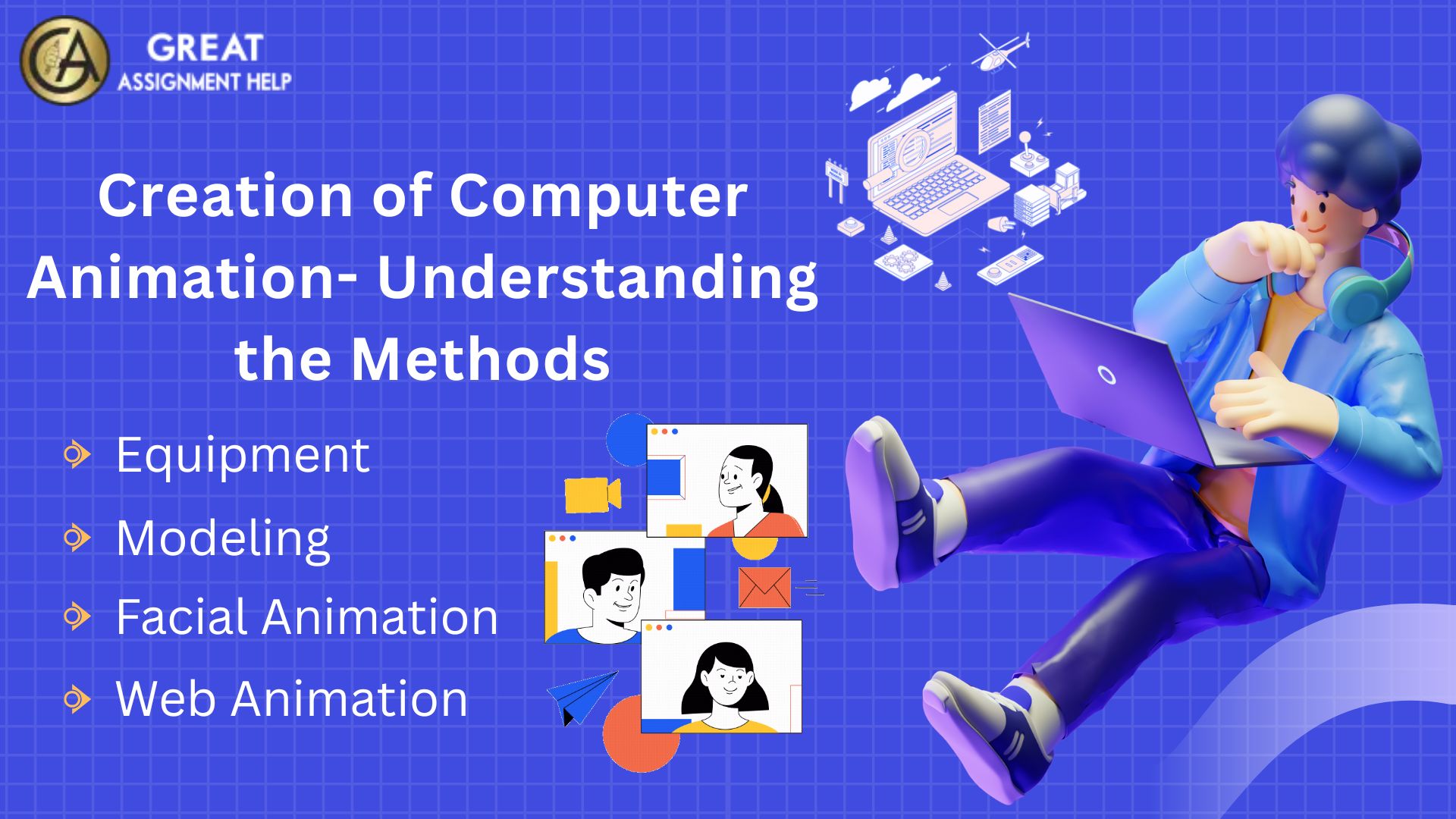Computer animation has changed the way we experience visuals. It mainly focuses on giving life to static images on screen by adding emotions and movements. It is an amazing technology that is related to computer graphics and has now become a big part of our lives. We commonly see animation in movies, video games, digital art, online shopping, and more. Especially the impact created by computer animation makes it an exciting field for students to study further. If you want to learn everything about computer animation, then continue reading this blog. For your understanding, here we have shared details about computer animation and its definition, history, techniques to enhance visual experience, and its role in various fields.
An Overview of Computer Animation
What is computer animation? Computer animation is the process of creating moving digital images, like those in Disney movies and video games. It is a type of Computer-Generated Imagery (CGI) that focuses on making pictures move. Computer animation is all about creating moving images, while computer graphics can include both moving and still images. The main goal of computer animation is to take a still picture or object and add digital movement to make it seem alive. This brings static images to life and makes them dynamic. Hence, computer animation is also called digital animation.
Computer Animation History
When we look back at the history of computer animation, we notice that the movie Westworld was one of the first to use computer animation. It was a science fiction film that explored the idea of robots living alongside humans. Later, the movie Future World (1976) also featured computer animation, using 3D wireframe images.
Every year, experts in computer graphics gather at the SIGGRAPH conference to share their knowledge. Today, computer animation is widely used in video games and graphics.
In 1994, the first animated TV series made with computers was released. A year later, the movie Toy Story (1995) became the first full-length animated film made entirely with computers by Pixar. The film showed toys coming alive and interacting with their owner magically.
Digital Animation vs. Traditional Animation
Digital animation and traditional animation are two different methods. Digital animation uses computers to create moving images, while traditional animation involves hand-drawn or physical images. Understanding the differences between them can help you choose the best method for your project. To find which one suits you better, let us explore the difference between digital animation and traditional animation here
Tools: Digital animation needs a powerful computer and software, while traditional animation requires physical materials like paper, pencils, and paints.
Storage: Digital animation files are easy to store and share, whereas traditional animation requires some physical storage space for artwork.
Cost: Digital animation is often cheaper and requires less labor. On the other hand, traditional animation can be more expensive due to the time and effort needed.
Efficiency: Digital animation is generally faster to create, while traditional animation is more time-consuming and requires a dedicated workspace.
Error Fixing: Digital animation allows for easy correction of mistakes with undo options, whereas in traditional animation, errors can be harder to fix.
Reusability: Digital animation is easy to edit and reuse. But traditional animation is harder to repurpose.
Realism: Digital animation can create very realistic visuals, while traditional animation can struggle to achieve the same level of realism.
Uses of Computer Animation
Computer animation is a popular tool that artists commonly use to bring their ideas to life. Before computers, animators drew each frame by hand, using a technique called traditional animation. This method is still used today, especially for 2D animation. But, now, many artists prefer computer animation to create various things, such as:
- Movies, simulations, and advertisements
- Video games and cartoons
- Visual aids for science and education
Creation of Computer Animation- Understanding the Methods

In 3D animation, a digital skeleton is created to control character movements. This skeleton is made up of segments that can be positioned to create different poses. No matter whether it is for humans or animals, the goal of a computer animation is to accurately depict the movement of real-life bones and joints.
These are some common methods of creating computer animation
Equipment
For creating computer animation, you must have a computer and animation software. But to create a high-quality animation like in movies and video games, you will require photo-realistic technology. This technology will help you make each frame look incredibly realistic, like a photograph. Along with that technology, for developing such types of animation, you must have advanced computers with strong processors and graphics cards.
Modeling
In 3D computer animation, first, you will have to create objects using digital tools and a coordinate system. Remember, you can shape and add details to these objects with precision, much like sculpting with clay. Especially for giving life to these objects, you can use techniques like motion capture or key framing. It involves setting specific control points for detailed movements. Typically, by using this technology, you can create impressive visuals in movies and videos.
Facial Animation
Computer facial animation is a challenging field that involves creating detailed movements of a character’s face. When working on facial animation, to make the facial expressions look realistic, you must have to use a lot of variables. The development of facial animation began to take shape with key events like the SIGGRAPH tutorials in 1989 and 1990.
Web Animation
Web animation applications focus on creating engaging visuals that enhance the user’s experience online. Especially, with this animation method, you can make websites and online content more interactive, appealing, and enjoyable for users. Web animation is a growing field that offers exciting career opportunities for students and professionals.
How Computer Animation Enhances Visual Experience- Exploring the Techniques
To enhance the visual experience of users, several computer animation techniques are available. If you want to give life to static images, then you can use any of these digital animation techniques
Digital cut-out animation: With this technique, you can create digital puppets that can be moved and animated.
Paperless animation: This technique will allow you to sketch characters, frames, and backgrounds directly onto an electronic drawing tablet and then transfer them to a computer for digital animation.
3D animation: By using this technique, you can create a virtual skeleton for characters or objects, and then animate it to move realistically with lifelike effects.
Motion Capture: To create realistic movements in movies and TV shows, you can use this technique. It will allow you to record an actor’s performance and apply it to an animated character.
Motion Graphics: It is a common technique used in movie opening scenes. With motion graphics, you can animate text and shapes, tell a story, and engage the audience.
The Role of Computer Animation in Various Fields
Computer animation plays a vital role in several fields. Here, let us look at how computer animation is helpful in some fields, such as education, medicine, marketing, entertainment, and gaming.
Education: Computer animation helps students learn complex topics easily through visuals. It also makes learning more engaging and interactive.
Medicine: Computer animation enables doctors to explain complex medical procedures and processes through 3D models. This improves patient understanding and makes information more accessible.
Marketing: Animated ads have the power to grab people’s attention. So, with computer animation, businesses can showcase or market their products or services.
Entertainment: In movies and TV shows, computer animation gives life to ideas and stories by using engaging UI elements.
Gaming: Computer animation makes games more realistic with detailed graphics and sound effects. It also lets players explore and create their own stories in immersive environments.
Wrapping Up
By now, you will have gained a better understanding of computer animation. If you want to become an animator, then you must possess strong knowledge of digital animation techniques and creativity. Remember, developing computer animation projects will help you enhance your skills and add value to your portfolio. If it is challenging for you to do your task, take our expert computer animation assignment help. The professionals from our team will guide you in finishing your computer animation assignments as per your needs and achieving the desired results.



